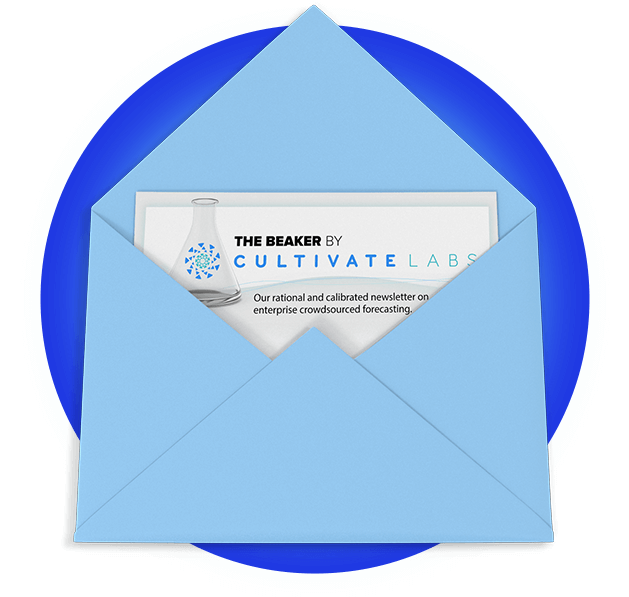Sales and Operational Planning: Bad Forecasts Don't Have to be a Given
By Adam Siegel on November 13, 2017
I recently spoke at an Institute for Business Forecasting and Planning conference. Two hundred business planners, who mainly focus on their Sales and Operational Planning (S&OP) processes at their organizations, came together to share lessons learned and hear about the latest thinking in the field.
In addition to speaking, I sat in on a day of sessions to hear directly from participants about the challenges they face in their respective organizations. Companies are spending gobs of money on big data, predictive analytics, and “strategic alignment” consulting, but fundamental problems still exist, including:
- Forecasting bias and inaccuracy driving major inefficiencies in supply chains;
- Difficulty getting broader company buy-in to participate in the process; and
- A desire to reach outside their walls for greater clarity on what was
happening elsewhere in their supply chain, or in the industry in general.
Right now, internal crowdsourced forecasting is still in its infancy. In our bubble, it’s been a no-brainer for years, but I’m always humbled when I stand in front of crowds, like at the IBF conference, and see only a smattering of hands indicate they’ve heard of crowdsourcing concepts applied with employees inside companies. They even labeled my talk as “vanguard,” and believe me, I’m not patting myself on the back for that; I’d rather have the label “Scaled and Ubiquitous”!
Both the power and challenge of internal crowdsourced forecasting is that the success of its implementation is only partially dependent on the software facilitating the process. Any other data project often depends on bringing disparate data sources together, but may only involve a few talented engineers and data scientists to get the work done. Crowdsourced forecasting, however, depends on bringing dozens, if not hundreds of people together across levels, and often across parts of the organization, to perform a task a few minutes per week.
Just getting my family to sit down all together at the dinner table is a challenge each night, let alone coordinating a few hundred people who all have other things to do.

Coordinating family dinner is hard, and so is coordinating forecasts from hundreds of people.
But is it worth it?
Let’s go back to what I heard at the conference among the S&OP planners. Here are the 3 fundamental problems they’re still experiencing and how crowdsourcing can address these:
1. Forecasting bias and inaccuracy drive supply chain inefficiencies.
We know that crowdsourced forecasting can be quite accurate. Also, by constantly measuring people’s forecasts, we can highlight both organizational and individual biases that exist. Ideally, by continuously forecasting, the feedback that decision-makers regularly receive will translate to more calibrated and accurate results. If you’re an S&OP planner and have discounted bad forecasting as an unfortunate reality of the process (a sentiment I heard in multiple talks), what could you do with forecasts that were 20%+ more accurate? What if your sales team became better at forecasting? How much efficiency would that drive? I suspect there’s a nice number behind the answer.
2. Getting broader company buy-in to participate in the process.
This is a hard one. But the magical thing about crowdsourced forecasting is that likely, for the first time, you’re asking people what they think about critical events. This isn’t just another survey. They’re having direct impact on one of the most critical issues the business faces. How much are we going to sell next year? What is our competition doing? Will our marketing campaign work? Countless studies show the more engaged employees are, the more loyal they are and the more impactful their work will be in general. As one S&OP planner put it to me, “When we make wrong forecasts, people get laid off. You should be damn sure people are going to want to have a say on what reality is as early as possible to avoid any surprises and keep their jobs.”
3. Collaboration for greater clarity into their supply chain and industry.
I’ve been referring to employee crowdsourcing in this post, but there’s no reason this has to just be your employees. It could instead be employees from your partner companies, your clients or customers, or your key stakeholders forecasting alongside your team. “Frien-emy” and non-disclosure issues set aside for a moment, there are surely forecasting questions in which your ecosystem has a shared interest to get a better signal on that would provide mutual competitive advantage and transparency.
S&OP can clearly deliver results, but like any other process, it needs constant iteration and improvement. Planners are just now starting to learn about crowdsourced forecasting as a solution to address some of the key problems they’re facing. Everyone in your organization (and broader ecosystem) has vital knowledge, experience, and wisdom that can be tapped to your advantage. Throwing money at data analytics is only going to get you so far. It turns out people’s opinions, especially when aggregated to produce ongoing collective intelligence, can have a vital role to play too.
To learn more how crowdsourced forecasting can improve forecasting for S&OP, check out our business solution or try it out and see for yourself!
If you learned anything new in this post, or just liked the picture of the baby with food all over its face, maybe you should consider following us on Twitter @cultivatelabs. See you there!

By: Adam Siegel
Adam is the CEO and Co-Founder of Cultivate Labs.
prediction markets change management enterprise crowdsourcing crowdsourced forecasting

